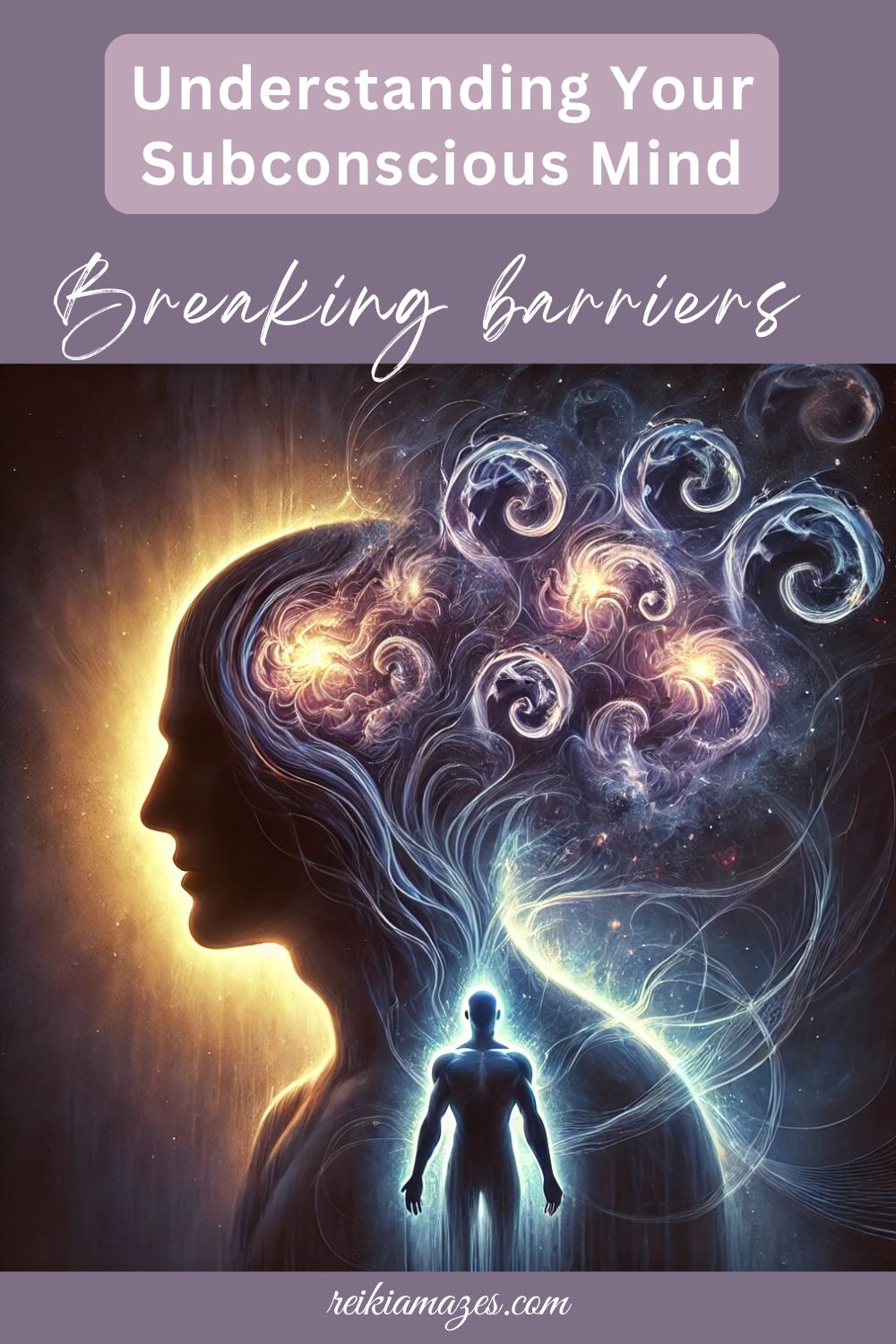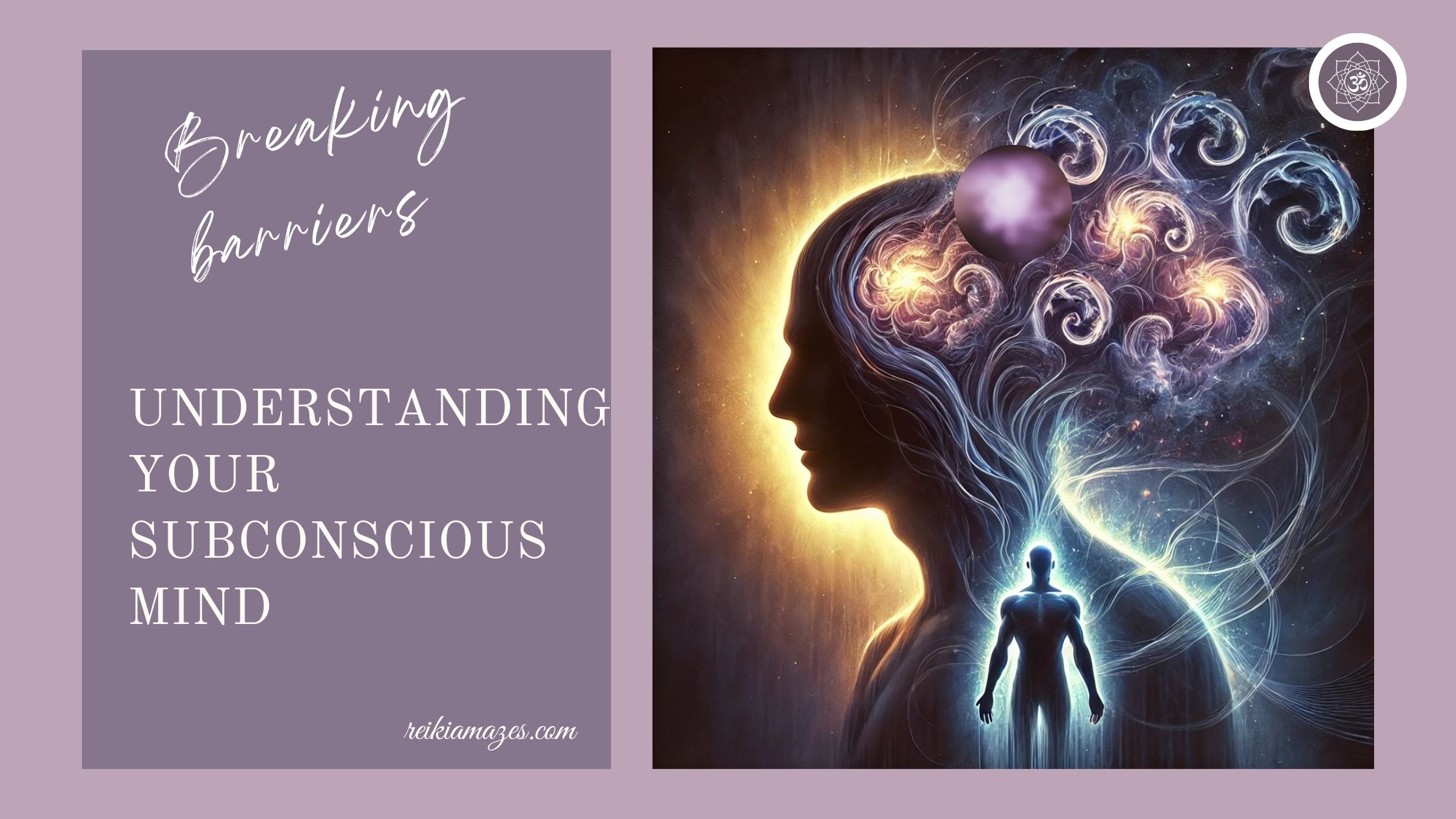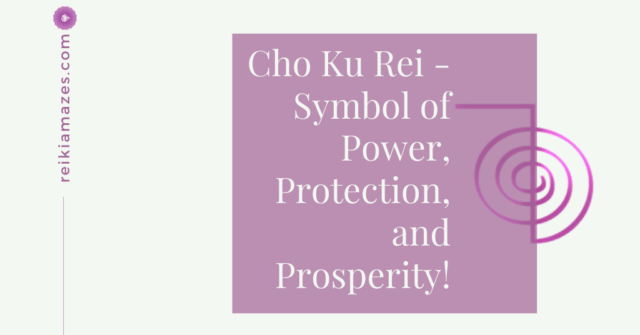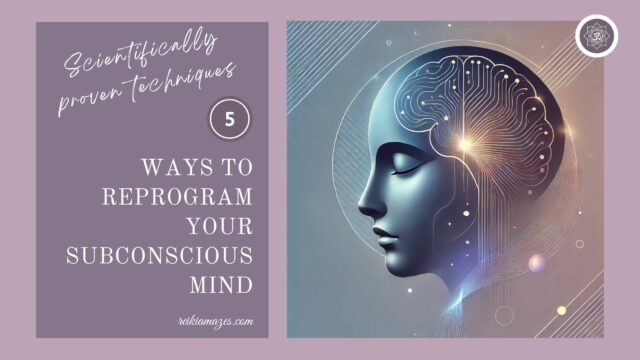Breaking Barriers to Subconscious Understanding can be difficult if you don’t know you have them. let’s try to figure out them.
Have you ever tried to explain a dream to someone, only to find yourself stumbling over the bizarre details that made perfect sense while you were asleep? Or perhaps you’ve wondered why that one practice everyone raves about leaves you more frustrated than enlightened? Welcome to the mysterious world of subconscious understanding—where what we think we know and what’s actually happening can be worlds apart!
The human mind is like an iceberg—the conscious mind is merely the tip visible above water, while the vast subconscious lurks beneath the surface, influencing our thoughts, behaviors, and perceptions in ways we rarely recognize. Understanding this hidden realm isn’t just fascinating—it’s essential for personal growth, emotional healing, and unlocking our full potential.
In this guide, we’ll dive deep into the critical barriers that prevent us from truly understanding our subconscious mind, separating persistent myths from evidence-based reality.
By the end, you’ll have practical tools to break through these barriers and develop a healthier relationship with your own inner world. Ready to become fluent in the language of your subconscious? Let’s begin!
What are Critical Barriers to Subconscious Understanding?
Critical barriers to subconscious understanding are the mental roadblocks, misconceptions, and habitual patterns that prevent us from accurately perceiving and working with our subconscious mind.
These barriers act like static on a radio—they interfere with the clear signals our subconscious is constantly sending us through dreams, intuitions, emotional responses, and even physical sensations.
These barriers aren’t just theoretical concepts—they’re active forces that shape our daily experiences. They can manifest as persistent negative thought patterns, emotional reactions that seem to come out of nowhere, or behavioral habits that we can’t seem to break despite our best efforts.
When we misunderstand how our subconscious actually works, we often end up fighting against ourselves rather than harnessing the incredible power of our complete mind.
Why Does Understanding These Barriers Matter?
Imagine trying to drive a car without understanding how the engine works, or attempting to speak a language without learning its basic grammar. That’s essentially what we’re doing when we try to navigate life without understanding the subconscious mind’s influence on our thoughts, feelings, and behaviors!
Research from fields like neuroscience and psychology increasingly shows that our conscious mind accounts for only about 5% of our cognitive activity, while the other 95% occurs below the surface of awareness. This means that when we’re blocked from understanding our subconscious, we’re essentially operating with access to only a tiny fraction of our mental resources.
Breaking through these barriers has profound implications for every aspect of life—from improving relationships and boosting creativity to achieving personal goals and healing from past traumas.
By distinguishing myths from reality, we can stop wasting energy on approaches that don’t work and instead develop effective strategies for subconscious communication and integration.
How to Overcome Critical Barriers to Subconscious Understanding
Let’s understand the journey to break down these barriers and develop a more accurate understanding of how your subconscious mind really works. This isn’t about quick fixes or magical thinking—it’s about developing practical skills grounded in both science and time-tested wisdom.
Step 1: Recognize Common Myths About the Subconscious
First, let’s clear the mental clutter by identifying the most common misconceptions that block our understanding of the subconscious mind.
Myth #1: “The subconscious is a separate entity working against me.”
Reality check: Your subconscious isn’t your enemy! It’s actually a protective mechanism designed to keep you safe and functioning efficiently. That inner critic? It’s often trying to shield you from perceived harm, even if its methods are outdated or misguided.
Myth #2: “My subconscious thoughts are always deep, meaningful, and symbolic.”
Reality check: While sometimes true, your subconscious is also concerned with mundane processing and routine functions. Not every dream or random thought contains profound wisdom—sometimes that dream about flying penguins is just your brain’s nightly housekeeping!
Myth #3: “I can completely control my subconscious mind with enough willpower.”
Reality check: This myth sets us up for frustration! Your subconscious processes information differently than your conscious mind and responds better to imagery, emotion, and repetition than to forceful commands or logical arguments.
Myth #4: “My subconscious mind is filled with dark, repressed memories and desires.” Thanks, Freud! Reality check: While the subconscious does store memories and experiences we’re not consciously aware of, it’s not necessarily a seething cauldron of repressed trauma. For many people, it’s more like an efficient filing system that occasionally misfiles information.
Pro tip: When you catch yourself believing these myths, try responding with gentle curiosity rather than judgment. “Hmm, I notice I’m thinking of my subconscious as the enemy again. I wonder what changes if I see it as an ally with different communication methods?”
Step 2: Learn the Actual Language of Your Subconscious
Your subconscious doesn’t communicate in logical arguments or PowerPoint presentations—it has its own unique dialect! Understanding this language is key to breaking through barriers of misunderstanding.
The subconscious primarily speaks through:
- Emotions and bodily sensations (that gut feeling or tension in your shoulders)
- Images and metaphors (daydreams, night dreams, and sudden mental pictures)
- Repetitive thoughts or impulses (those songs stuck in your head or sudden cravings)
- Recurring patterns (recurring themes or coincidences in your life)
To become fluent in this language, start keeping a “subconscious communication journal.” When you notice strong emotions, recurring dreams, persistent thoughts, or physical sensations that seem to carry a message, jot them down without judgment. Over time, patterns will emerge that can provide valuable insights into your subconscious processes.
Fun experiment: Try the “first thought” game. Ask yourself a question, then note the very first thought, image, or sensation that arises before your logical mind kicks in. These immediate responses often come directly from your subconscious and can bypass the usual barriers of overthinking.
Step 3: Create a Dialogue Rather Than Command
One of the biggest barriers to subconscious understanding is our tendency to approach it with a controlling, demanding attitude. Remember, your subconscious responds better to invitation than command!
Instead of trying to force your subconscious into compliance (“Stop making me anxious!”), try creating a respectful dialogue. This might feel silly at first, but techniques like journaling as your subconscious or having an imaginary conversation with different parts of yourself can be surprisingly effective.
Common mistake alert: Avoid creating a hostile internal environment by negative self talk. Phrases like “Why am I so stupid?” or “What’s wrong with me?” put your subconscious on the defensive. Instead, try curious, open-ended questions like “What might be the purpose of this pattern?” or “What information is this feeling trying to give me?”
Step 4: Recognize the Influence of Cultural and Personal Conditioning
Many barriers to subconscious understanding come from outside ourselves—cultural messages, family patterns, and societal expectations that shape how we relate to our inner experience.
Take some time to reflect on the messages you received growing up about emotions, intuition, dreams, and the irrational aspects of human experience.
Were you taught that emotions are weakness? That rational thinking is always superior to intuition? That certain feelings are unacceptable? These messages form invisible barriers between your conscious and subconscious mind.
Create a “permission slip” for yourself to explore aspects of your subconscious that might have been labeled as unacceptable or unimportant. This could be as simple as writing: “I give myself permission to acknowledge all my emotions, even the uncomfortable ones” or “I allow myself to consider the wisdom in my dreams and intuitions.”
Personal exploration exercise: Identify a cultural or family belief about the mind that you’ve internalized. For example, “Strong people don’t need to explore their feelings” or “Logical thinking is always more reliable than intuition.” How might this belief be limiting your understanding of your subconscious? What would change if you questioned this assumption?
Step 5: Develop Practical Tools for Subconscious Integration
Now that we’ve identified and begun to dismantle the barriers, let’s focus on creating bridges between your conscious and subconscious mind.
- Mindfulness meditation: This practice helps you observe your thoughts and feelings without judgment, creating space for subconscious content to rise to awareness. Even 5 minutes daily can make a difference.
- Dream work: Keep a dream journal by your bed and record dreams immediately upon waking. Look for recurring themes rather than trying to interpret every detail.
- Expressive arts: Drawing, movement, music, or free-writing can bypass the logical mind and give your subconscious a direct channel for expression.
- Body awareness practices: Your body often expresses what your subconscious knows before your conscious mind catches up. Regular body scans can help you tune into this wisdom.
- Symbolic thinking: Work with metaphors and symbols that resonate with you personally. If a particular image or idea keeps appearing in your awareness, explore its meaning for you.
The key is consistency. Choose one or two practices that appeal to you and make them a regular part of your routine. Your subconscious responds to repetition and ritual, gradually becoming more accessible as you establish reliable channels of communication.
Additional Enhancements
Power Phrases or Affirmations for Subconscious Communication
Replace barrier-creating thoughts with these bridge-building alternatives:
- Instead of “I need to control my thoughts,” try “I’m curious about what my mind is showing me.”
- Replace “This feeling is irrational” with “This feeling carries information I might need.”
- Swap “I shouldn’t feel this way” for “I acknowledge this feeling without judgment.”
Visualization Exercise: The Inner Meeting Room
Imagine a comfortable room where you can meet with different aspects of your subconscious mind. Visit this room in meditation, inviting specific parts of yourself—the inner critic, the creative child, the wise observer—to share their perspectives.
The Power of Paradox
Sometimes the fastest way around a barrier is to embrace it! If you’re struggling with a particular pattern or response, try the paradoxical approach of fully accepting and even exaggerating it (in your imagination). This often releases the tension that maintains the barrier.
Helpful Resources
- Books: “The Body Keeps the Score” by Bessel van der Kolk; “Focusing” by Eugene Gendlin
- Apps: Insight Timer (for guided meditations); Dream Journal Ultimate (for tracking dreams)
- Practices: yoga, meditation, EFT, Internal Family Systems therapy, Active Imagination
Common Mistakes to Avoid
- Expecting immediate results: Subconscious understanding develops gradually. Be patient with yourself and celebrate small insights.
- Overanalyzing: Sometimes trying to “figure out” your subconscious creates more barriers. Allow for not-knowing and mystery as part of the process.
- Using only one approach: Different aspects of your subconscious respond to different methods. If dream work isn’t revealing much, try movement or art instead.
- Pathologizing normal subconscious processes: Not every unwanted thought or feeling indicates a problem. The subconscious mind is naturally associative and sometimes chaotic—that’s part of its creative power!
- Ignoring professional support when needed: While self-exploration is valuable, some subconscious material relates to trauma or deep patterns that benefit from professional guidance. Don’t hesitate to seek help when navigating difficult territory.
Troubleshooting and Answering Common Questions
Q: Sometimes I feel overwhelmed by emotions or memories when I try to connect with my subconscious. What should I do?
A: This is normal! Start with smaller doses of exploration and always have grounding techniques ready. Simple practices like focusing on your breath, feeling your feet on the floor, or naming objects you can see can help you regain balance.
Q: How do I know if I’m really accessing my subconscious or just making things up?
A: The line between imagination and subconscious insight isn’t always clear—and that’s okay! The value is in the exploration itself. Generally, subconscious material feels surprising, carries emotional weight, or provides perspectives you wouldn’t consciously create.
Q: I’ve tried several techniques but still feel disconnected from my subconscious. What now?
A: Everyone’s mind works differently. You might need a more active approach (like movement or art) or a quieter one (like meditation or journaling). Also consider whether you’re creating a safe enough internal environment—the subconscious often protects itself when we approach with judgment or impatience.
Recommended Read:
Use the Subconscious for Weight Loss | Watch the Pounds Melt Away
The Power of Your Subconscious Mind: What Science Says
5 Ways to Reprogram Your Subconscious Mind | Scientifically Proven Techniques
Can Thoughts Change Reality? The Science Behind Manifestation
7 Signs Your Subconscious Is Blocking You
6 Secrets to Wealth by Joseph Murphy
Can Sleep Really Solve Your Problems? Science Says Yes!
Rewiring the Subconscious for Success: 5 Inspiring Case Studies
How Subconscious Beliefs are Formed (and How to Change Them)
Emotions and Your Subconscious Mind: Decoding the Connection
Placebo Effect and Subconscious Mind: The Shocking Truth
Subconscious Mind and Visualization | Proven Technique That Works Like Magic
Conclusion and Your Action Plan
Breaking through barriers to subconscious understanding isn’t a one-time achievement but an ongoing practice of curiosity, compassion, and courage.
By distinguishing myths from reality, learning the language of your subconscious, creating respectful dialogue, recognizing conditioned barriers, and developing practical integration tools, you’ve begun a journey that can transform your relationship with your whole mind.
The goal isn’t to control your subconscious but to collaborate with it. When conscious and subconscious work together, you access a level of wisdom, creativity, and healing that neither could achieve alone.
Start small: Choose just one technique from this guide and practice it consistently for two weeks. Notice what shifts and what doesn’t. Be patient with yourself and approach the process with playful curiosity rather than rigid expectations.
? Destiny Designers, understanding your subconscious mind is like finding the master key to your inner universe! Now that you’ve learned about the barriers between your conscious and subconscious, which myth-busting reality check resonated most deeply with you?
Drop a comment below and let’s expand our understanding together! And if you know someone who’s struggling to break through their own mental barriers, share this post with them.
Don’t forget to save this post for later, We’re all in this journey together, designing our destiny one insight at a time. ?










![26 Reiki Points For Self Treatment – Refresh Yourself Everyday-[Updated]](https://reikiamazes.com/wp-content/uploads/./Feature-Image-Small.jpg)


